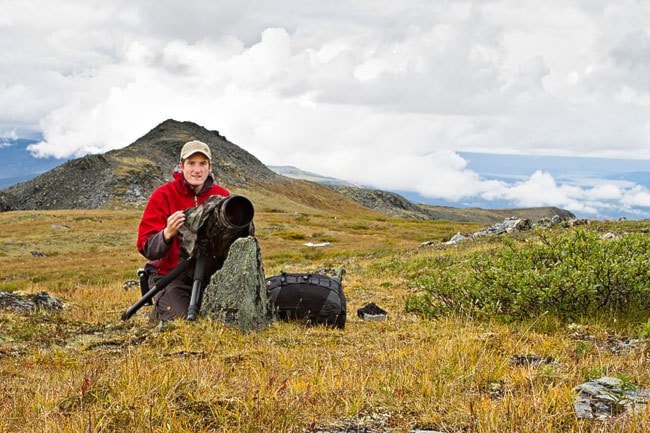By Sylvie Painchaud
For some time, nature photographer Nicolas Dory had been dreaming about the great escape. During the week, he developed websites. On weekends, his bags filled with sophisticated photography equipment, he would leave behind the hustle and bustle of Lyon and go hiking in the forest or in the mountains in the hope of photographing the most beautiful birds in the area.
One day, he took the plunge. Dory sold everything, including his photography equipment, to finance a long adventure trip to Canada. What he knew of the Yukon was through Jack London’s books and Nicolas Vanier’s movies.
Three years ago, he stopped in Whitehorse. Since then, the Yukon has been his new home. A local firm hired him to create websites. He bought new telephoto lenses and now, after work, it takes him only five minutes to get to his playground.
Dory now exports the most beautiful images of the Yukon’s wildlife and subarctic landscapes around the world.
He is specifically passionate about animals. He can spend hours observing a herd of Dall sheep, approaching them a few centimetres at a time, until he manages to get right in the middle of the herd. This patience allows him to take pictures of astonishing truthfulness. Some have won awards.
When asked about the feeling of being surrounded by dozens of enormous animals, he simply replies, “The animals quite often don’t notice that I’m there.” Yet the piercing stare of a lynx, photographed almost by accident, expresses something entirely different. It looks directly into the lens with an expression that says ‘It’s almost dinner time!’ This picture is now part of the prestigious National Geographic image bank. More of Dory’s photos provide eloquent illustrations for the Ulysse Alaska-Yukon tourism guide.
Having started in photography to document his passion for ornithology, this bird lover could have been put off by the Yukon winter, which lasts close to six months. But he wasn’t.
“The species that stay are interesting,” he says, adding that he installed a bird feeder close to his house to attract them. He can observe pine grosbeaks or grey jays that come all winter to feed, right under his nose. And winter has other advantages. “I love to see the silhouettes of animals against the snow,” he says, explaining how warm and soft the fading light of sunset is in the Yukon winter. When summer returns, with its 18 hours of intense light, he prefers to concentrate on scenic landscapes. Soon, he would love to turn his attention to photographing more plant life.
“There are a lot of specimens and names to learn, but I will get down to it,” he says. And that will make us all happy.
See his photos for yourself at www.nicolasdory.com
This article is excerpted from the third edition of a tourism brochure created by Association franco-yukonnaise. You can get a copy of the brochure (in French) at the Centre de la francophonie in Whitehorse or at the tourism information centre in your community.
